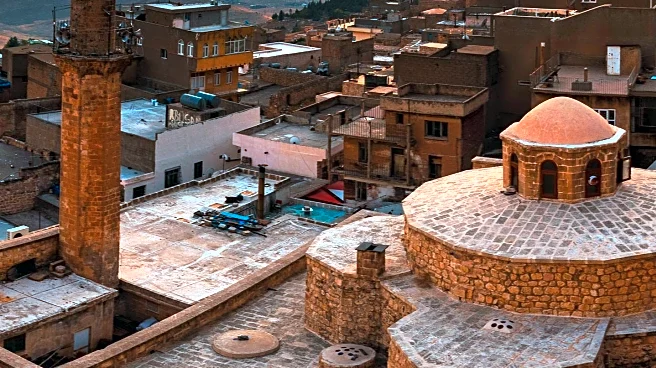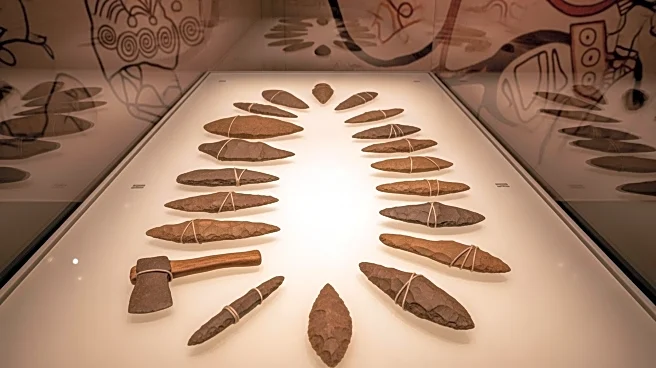What is the story about?
What's Happening?
Archaeologists have uncovered a 12,000-year-old human-shaped statue embedded within a wall at Göbekli Tepe, the world's oldest known temple complex located in southeastern Turkey. The discovery was announced by Turkey's Minister of Culture and Tourism, Mehmet Ersoy, who emphasized its significance in understanding Neolithic rituals and the symbolic world of early human communities. The statue, found between Structures B and D, retains its head and torso but is missing its feet, possibly due to intentional modification or erosion over centuries. Göbekli Tepe, known for its monumental T-shaped limestone pillars, has been a focal point for understanding early human civilization, serving as a ceremonial space rather than a domestic site. The statue's placement within the wall suggests a ceremonial function, possibly as a guardian figure or votive offering, aligning with other sacred architectural features at the site.
Why It's Important?
The discovery at Göbekli Tepe provides crucial insights into the spiritual and ceremonial practices of some of the world's earliest settled communities. It adds to the growing archaeological evidence that the site served a spiritual function, built for pre-agricultural societies experimenting with religious symbolism and organized gathering. The statue's integration into structural architecture indicates a belief in its ongoing spiritual presence, reflecting broader Neolithic patterns observed in the region. This finding enhances our understanding of early human belief systems and the symbolic language shared among neighboring communities. Göbekli Tepe's inclusion in the UNESCO World Heritage list has spurred international conservation efforts, highlighting its importance as a shared heritage of humanity.
What's Next?
Turkey is preparing to open new visitor facilities at Göbekli Tepe by late 2025, including a dedicated center and redesigned access paths to balance growing tourism with site protection. These updates aim to accommodate increasing public interest without compromising the site's integrity. Additionally, a new exhibition titled 'Myths in Stone: Göbekli Tepe and the World of the Last Hunters' is scheduled to open in February 2026 at Berlin's James-Simon Gallery, featuring artifacts from the Şanlıurfa Museum. These efforts reflect ongoing international engagement and conservation initiatives to preserve and promote Göbekli Tepe as a global cultural treasure.
Beyond the Headlines
The discovery of the human figure at Göbekli Tepe opens new questions about how early societies used symbolic figures within their sacred spaces. The statue's partial preservation and its integration into the architecture suggest specific ritual practices and a defined role within a ceremonial framework. This interpretation aligns with broader Neolithic patterns, indicating a shared symbolic language among early human communities. The site's promotion through global exhibitions and coordinated conservation efforts underscores its significance as a cultural and historical landmark, fostering international collaboration and understanding of early human civilization.
AI Generated Content
Do you find this article useful?














